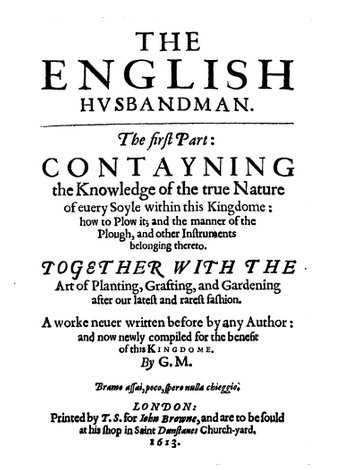Chaucer’s Medieval London Guided Walk Sun 11.30am 7th April 24 Aldgate Tube. To Book
The Decline And Fall Of Roman London Walk Sat 1.30pm 25th May 2024 Exit 2 St Pauls Underground Station. To Book
Jane Austen’s London Sat 6pm 25th May 2024 Green Park Tube (Green Park exit, by the fountain) to Book
The Peasants Revolt Anniversary Walk Thurs 6.30 13th June 2024 Aldgate Tube. To book
Chaucer’s Medieval London Guided Walk Sat 2.30pm 6th July Aldgate Tube. To Book
Myths, Legends, Archaeology and the Origins of London Sat 6pm July 6th 24 Tower Hill Underground To book
Roman London – A Literary & Archaeological Walk Sun 11.30 am 4th August 2024 Monument Underground Station To book
1066 and All That Walk Sat 2.30pm 9th Nov 24 Blackfriars Underground Station To book
For a complete list of my walks for London Walks in 2024 look here:
Apples & if the frost be very extreame January 9th
Gervase Markham was born in 1568, in Nottinghamshire, and was a prolific writer. Today, prompted by the Perpetual Almanac by Charles Kightly, I am looking through Markham’s eyes at Apples. Apples were an important source of joy as well as nutrition through a cold winter, as fresh produce became unavailable.
Markham wrote detailed books for use by the householders, the Husbands and the Housewives. And with the coming of frost, you would be advised to look at Markham’s books to ensure the survival of food in your food store. When the frosts hit, as they are now doing in the UK, you had to look after your store of apples, which were an important sweet food source over the winter, and Markham is the source of extensive advice on keeping your food deep into winter.
For the women, he wrote the English Housewife, published in 1615. Here is his recipe for Apple Tart (more of an apple purée tart, I think).
How to Make Apple-tart
Take apples and peel them and slice them thin from the core into a pan with white wine, good store of sugar, cinnamon and rosewater, and so boil it all shall it be thick. Then cool it and strain it, and beat it very well together with a spoon, and then put it into your coffin or crust and bake it. It carrieth with the colour red.
Gervais Markham, the English Housewife 1683 version (quoted by Charles Kightly).
For the men, he wrote the English Husbandsman, published in 1613 and ‘Printed by T. S. for Iohn Browne, and are to be sould at his shop in Saint Dunstanes Church-yard.’ This is the St Dunstan’s in Fleet Street, I think. The book is available on Project Gutenberg (Gervase Markham the English Husbandman. Project Gutenberg).
So to the frost – Markham ends his extensive piece on the best way to store apples as follows:
To keepe Fruit in frost. If the frost be very extreame, and you feare the indangering your fruit, it is good to couer them somewhat thicke with fine hay, or else to lay them couered all ouer either in Barley-chaffe, or dry Salte: as for the laying them in chests of Iuniper, or Cipresse, it is but a toy, and not worth the practise: if you hang Apples in nettes within the ayre of the fire it will kéepe them long, but they will be dry and withered, and will loose their best rellish.
I remember my Grandmother would store her excess apples from the tree, wrapped in paper and stored in cupboards in the pantry or outbuilding. I cannot remember which. They were often wrinkled but always delicious, and I think were Russets, which still remain my favourite apple.
At the bottom of the piece, I include the rest of his advice for storing apples. To summarise it, don’t store them near the ground, and put them on shelves ordered by variety based on which variety lasts longest. So at the back will be the long-lived species such as Russets and Pippins, to eat as spring approaches and at the front the ones you need to eat now such as the ‘Costard, Pome-water, Quéene-Apple‘ varieties.
Markham wrote many books, including one on the famous performing horse Marocco which starred in shows at the Bell Savage, just outside Ludgate in the City of London. Marocco would whinny in triumph with the naming of an English King, and snort with derision with the naming of a Pope, and could count and add up. He was rumoured to have been burnt at the stake as a witch in Edinburgh. But this does not appear to be true. Pocahontas also was shown at the Bell Savage, as was a Rhinoceros and other prodigies.
The Storage of Apples
If you want a more modern text on what to do with excess apples from your tree, have a look here, but do read on to get an insight into life in the 17th Century.
The place where you shall lay your fruit must neither be too open, nor too close, yet rather close then open, it must by no meanes be low vpon the ground, nor in any place of moistnesse: for moisture bréedes fustinesse, and such naughty smells easily enter into the fruit, and taint the rellish thereof, yet if you haue no other place but some low cellar to lay your fruit in, then you shall raise shelues round about, the nearest not within two foote of the ground, and lay your Apples thereupon, hauing them first lyned, either with swéet Rye-straw, Wheate-straw, or dry ferne: as these vndermost roomes are not the best, so are the vppermost, if they be vnséeld, the worst of all other, because both the sunne, winde, and weather, peircing through the tiles, doth annoy and hurt the fruit: the best roome then is a well séeld chamber, whose windowes may be shut and made close at pleasure, euer obseruing with straw to defend the fruit from any moist stone wall, or dusty mudde wall, both which are dangerous annoyances.
The seperating of Fruit. Now for the seperating of your fruit, you shall lay those nearest hand, which are first to be spent, as those which will last but till Alhallontide, as the Cisling, Wibourne, and such like, by themselues: those which will last till Christmas, as the Costard, Pome-water, Quéene-Apple, and such like: those which will last till Candlemas, as the Pome-de-roy, Goose-Apple, and such like, and those which will last all the yéere, as the Pippin, Duzin, Russetting, Peare-maine, and such like, euery one in his seuerall place, & in such order that you may passe from bed to bed to clense or cast forth those which be rotten or putrefied at your pleasure, which with all diligence you must doe, because those which are tainted will soone poyson the other, and therefore it is necessary as soone as you sée any of them tainted, not onely to cull them out, but also to looke vpon all the rest, and deuide them into thrée parts, laying the soundest by themselues, those which are least tainted by themselues, and those which are most tainted by themselues, and so to vse them all to your best benefit.
Now for the turning of your longest lasting fruit, you shall know that about the latter end of December is the best time to beginne, if you haue both got and kept them in such sort as is before sayd, and not mixt fruit of more earely ripening amongst them: the second time you shall turne them, shall be about the end of February, and so consequently once euery month, till Penticost, for as the yéere time increaseth in heate so fruit growes more apt to rot: after Whitsontide you shall turne them once euery fortnight, alwayes in your turning making your heapes thinner and thinner; but if the weather be frosty then stirre not your fruit at all, neither when the thaw is, for then the fruit being moist may by no meanes be touched: also in wet weather fruit will be a little dankish, so that then it must be forborne also, and therefore when any such moistnesse hapneth, it is good to open your windowes and let the ayre dry your fruit before it be turned: you may open your windowe any time of the yéere in open weather, as long as the sunne is vpon the skye, but not after, except in March onely, at what time the ayre and winde is so sharpe that it tainteth and riuelleth all sorts of fruits whatsoeuer.
St Distaff’s Day & the Triple Goddesses, January 7th
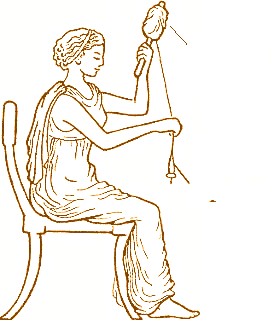
I’m not sure what the Three Kings were doing on the day after Epiphany, but, the shepherds, if they were like English farmworkers, would still be on holiday until next Monday, which is Plough Monday. By contrast, the women, according to folk customs, went back to work on the 7th, St. Distaff’s Day, the day after Epiphany.
A distaff is ‘a stick or spindle on to which wool or flax is wound for spinning’ and because of its importance in the medieval and early modern economy it became a synecdoche for women. St Distaff is a ‘canonisation’ of this use of the word. So, a day to celebrate women.
Robert Herrick (1591–1674), born in Cheapside, a Goldsmith, priest, Royalist and Poet wrote in ‘Hesperides’
Partly work and partly play
You must on St. Distaff’s Day:
From the plough, soon free your team;
Then come home and fother them;
If the maids a-spinning go,
Burn the flax and fire the tow.
Bring in pails of water then,
Let the maids bewash the men.
Give St. Distaff all the right;
Then bid Christmas sport good night,
And next morrow every one
To his own vocation.
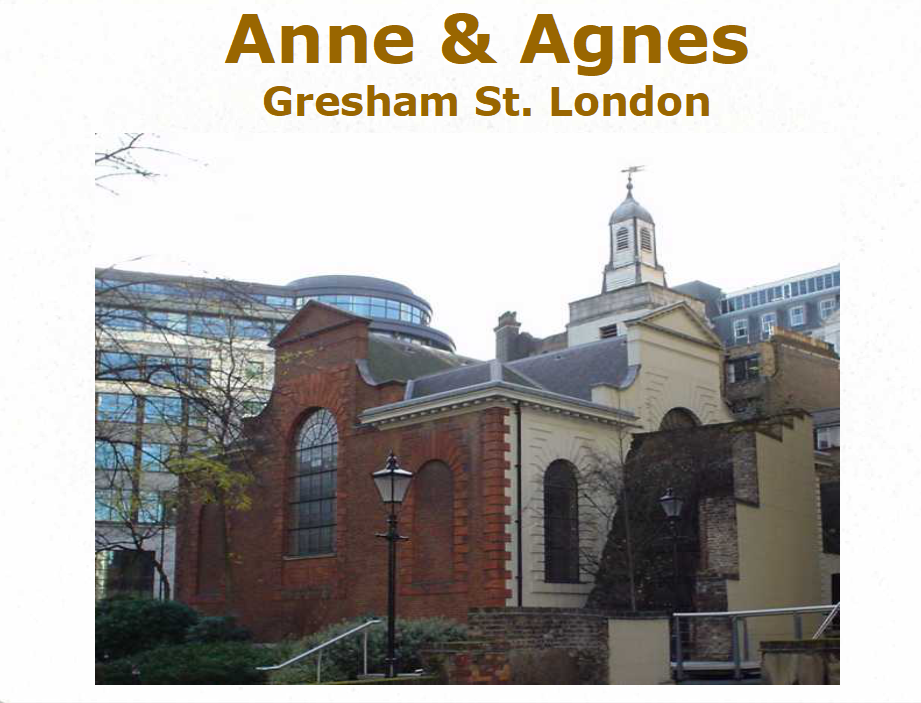
In London, the Fraternity of St Anne and St Agnes used to meet at the Church in London with that name. It is near to the (now closed) Museum of London on the junction of Gresham Street and Noble Street, by a corner of the Roman Wall. St Agnes is the patron saint of young girls, abused women and Girl Scouts. St Anne is the mother of the mother of the Son of God, and, thereby, the three generations of women are represented: maidens, mothers, and grandmothers.
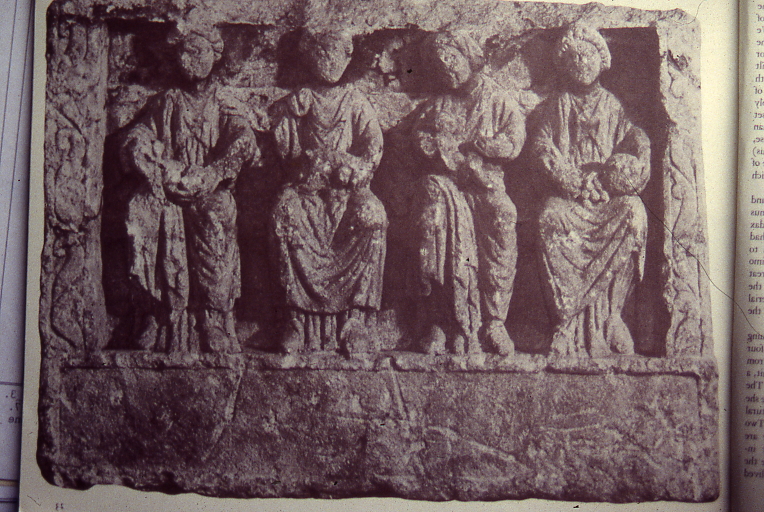
Archaeologists discovered the sculpture while investigating the Roman Wall at Blackfriars, City of London. Scholars believe it depicts the Celtic Three Mother Goddesses, worshipped in Roman London. The fourth person is a mystery, maybe the patron of the temple(?) where the relief sculpture was displayed before it was used as rubble and became part of the defences of London.
The idea of triple goddesses is a common one. In Folklore and History they have been referred to as Maiden, Mother, and Crone, or even Maiden, Mother and Hag. They come in Roman, Greek, Celtic, Irish, and Germanic forms with names like the Norns, the Three Fates, the Weird Sisters, the Mórrígan and many more. The Three Fates, the Goddess Book of Days says, were celebrated during the Gamelia, the Greco/Roman January Festival to the marriage of Zeus and Juno. The Festival also gives its name to the Athenian month of January.
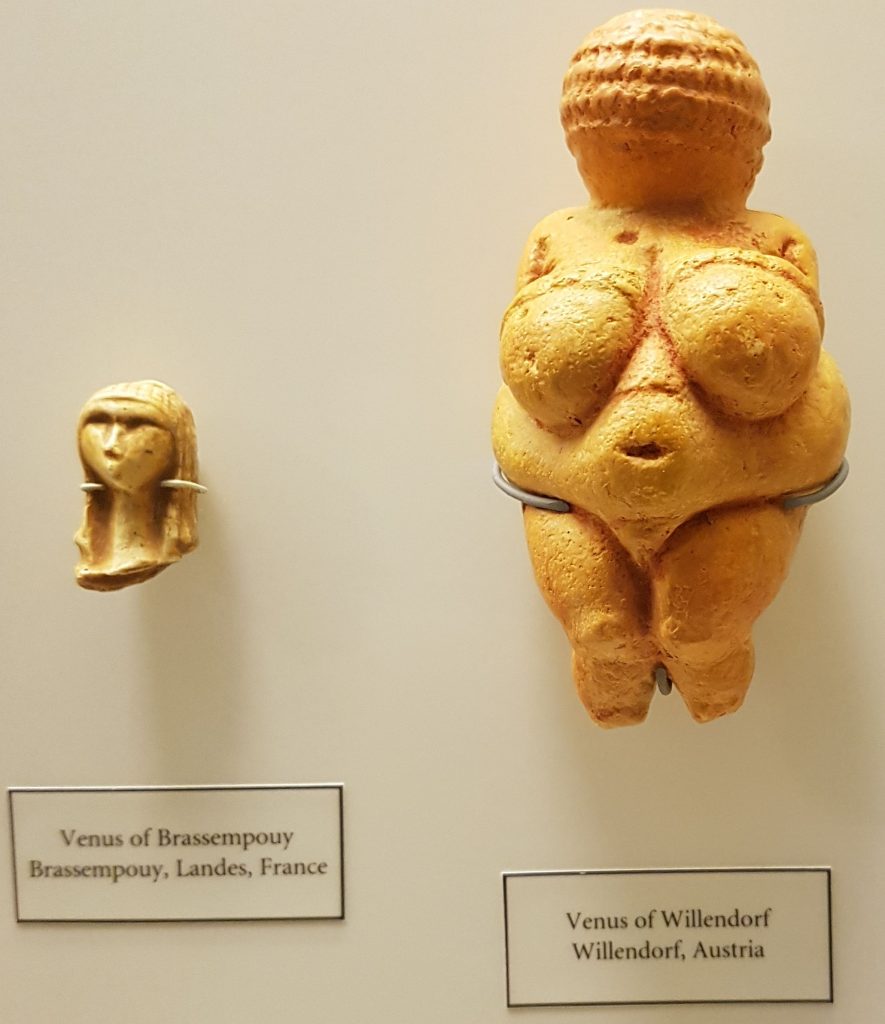
There was a theory widely held that the original Deities, dating before the spread of farming, were mother goddesses (perhaps as depicted by the Venus of Willendorf) who were overthrown by the coming of farmers who worshipped the male gods which destroyed the ancient Matriarchy and replaced it with the current Patriarchy. Jane Ellen Harrison proposed an ancient matriarchal civilization. Robert Graves wrote some interesting, but no longer thought to be very scientific studies, on the idea. Neopaganism has taken these ideas forward.
Whatever the truth of the origins of the Three Mother Goddesses, the use of the terms Hag and Crone for the third is a great disservice to the Grandmother figure. These Goddesses represent the importance of the female for human society. The three phases of womanhood are equally as important in the continuation of the species, providing love, support, and experience through the generations. Compare these three generations of supportive deities with Ouranos (Uranus), Cronus (Saturn) and Zeus (Jupiter). Saturn castrated and deposed his father, Uranus. Later, he tried to eat his son, Jupiter. And then Jupiter is nobody’s idea of an ideal father.
Recent work on human evolution has suggested that the role of the Grandmother might be crucial to our species’ ability to live beyond the age of fertility. Because, in evolutionary terms, once an individual cannot procreate their usefulness for the survival of the genes is finished. So what’s the point of putting resources into their survival? The theory is that, particularly with women, the Grandmother has such an impact on the survival of the next generation, that longevity beyond fertility makes evolutionary sense, and is selected for.
Have a look at this site for more information.
More information on St Agnes in this post below:
Yesterday was dedicated to Joan of Arc, and today is the anniversary of the breaking of the fabulous Portland Vase in 1845 by a drunken visitor to the British Museum. It looks immaculate despite being smashed into myriad pieces, a wonder of the conservator’s art. To see the vase and read its story, go to the BM web site here:
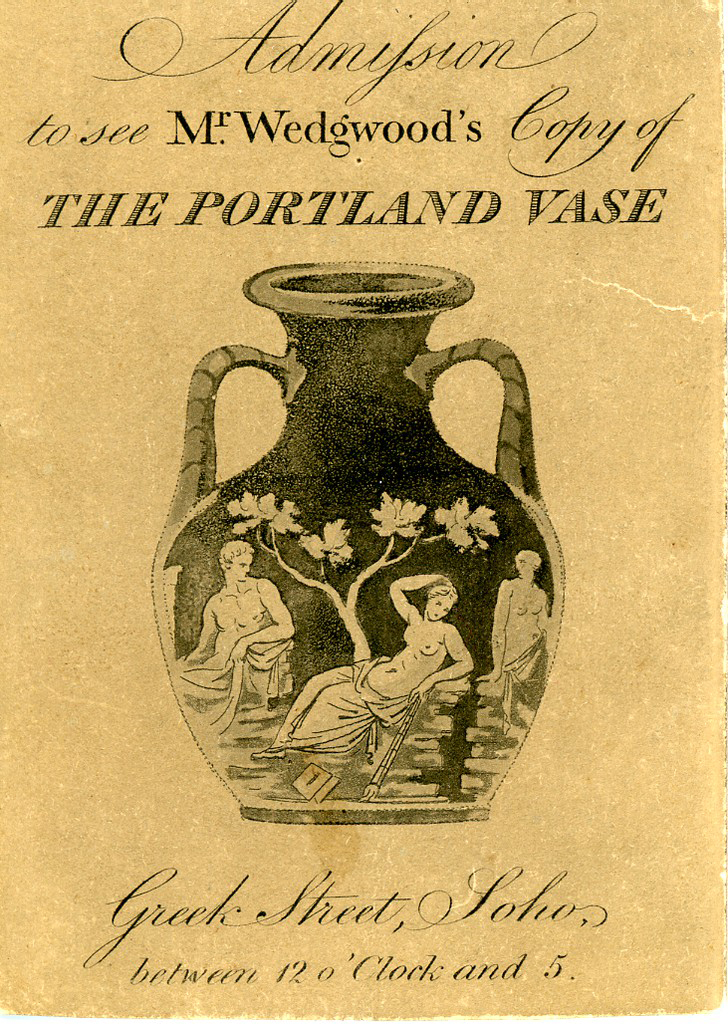
In the orthodox church, дед Мороз (Ded Moroz= father of frost), accompanied by Cнегурочка (Snieguroshka= fairy of the snow) brings gifts on New year’s eve, (which is on January 7th). He travels with a horse drawn troika.
First Published in 2022, and revised in January 2024
A Radical Twelfth Night January 6th
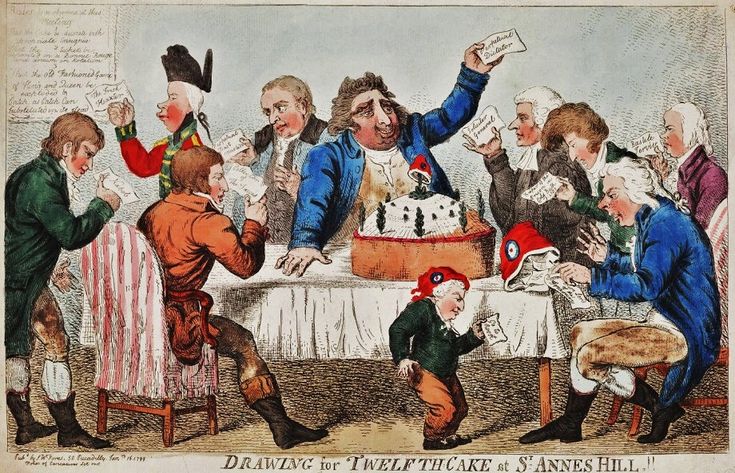
’12th Night Cruikshank, Isaac, 1756-1811 printmaker. Published Janr. 10, 1807 by Thomas Tegg, 111 Cheapside’
I used the print above, two years ago for my post on New’s Day (in fact this is an update of it) and I use it in lectures on Christmas and Jane Austen. But I have always presented it in the context of explaining Twelfth Night Cake and the game that was played on Twelfth Night, which is, satirically, illustrated here.
Rushing to get the post done, I didn’t examine it in detail but assumed the papers they were reading, gave them satirical occupations to pretend to be, which would be funny to the contemporary audience in 1807. This year, I noted the title mentioned St Anne’s Hill, and thought I ought to at least try to find out what that referred to. And I then went down a deep and very enjoyable research rabbit hole.
But, more of that, later. Let’s begin with the more trivial aspect of the Print above from 2022 January 6th post, edited a little.
Yesterday was Twelfth Night for the modern Church of England, but today is Twelfth Night for the Catholic Church and in England in former times. It is also Epiphany or Three Kings Day and because of calendrical differences, Christmas Eve for the Orthodox Church. In Ireland, it is Nollaig na mBan: Women’s Little Christmas; when Women get to rest and let men do the work.
It used to be the big party night, featuring the famous Twelfth Night Cake and theatrical entertainments; mumming and wassailing. The cake transmuted into our present Christmas Cake. This, I regret because I have had a lifetime when a very heavy Christmas Dinner is followed both by Christmas Pudding and, then, the Christmas Cake is brought out. No one, in their right mind, wants a slice of heavy Christmas Cake at that time. Many of my American friends disparage fruit cake, but they are mistaken. Good Christmas Cake is something to be thoroughly enjoyed, but on the days following Christmas Day.
I gave a recipe for the Twelfth Night Cake in another post, (here it is) but the important point is that it had a bean and a pea in it. The one who got the bean was selected thereby as King for night and the pea the Queen. Cards/papers were then given to all the participants detailing a role they were to play for the rest of the night, with an introductory speech, or rhyme The King and Queen led the way and for the rest of the evening the party members adopted the persona; an aristocrat, a soldier, a cook, a parson, a dairy maid etc. The French do something similar with their Galette des Rois. The bean is called the feve, and may be replaced by a porcelain model.
In the illustration above, you will see the participants, pulling their role cards out of their hat. In the game, the women’s cards were drawn from a ‘reticule’ (bag) and the men’s from a hat. In the illustration above, the hat seems to be a revolutionary sans culotte’s cap. (and I have only just realised, while doing a third proofread of this article, that all the people in the Print are men.)
Here is an example of a Twelfth Night gathering, attending William Snooke were:
‘Mr and Mrs William Clifford and their seven children (and maid), John Fox Snr. and Sally Twining, Mr and Mrs William Fox, and William Weale. To feed this crowd took “Ham, Greens, 3 fowls roasted, Soup, Leg of Mutton, potatoes, Boiled rump of beef (large)” Desert included pudding, mince pies and a forequarter of home lamb. For supper, the assembled party consumed tarts, stuffed beef, mince pies, cold mutton, oysters, cold sliced beef, cold lamb, apple pies and pears.
6th January 1775, William Snooke’s Diary taken from this Pinterest post
St Anne’s Hill
Now, let’s go down that rabbit hole and look a little deeper.
The caption mentions St Anne’s Hill. I believe this refers to St Anne’s Hill, near Chertsey (SW of London on the River Thames) where the grand house was owed by Charles James Fox, the leader of the Whigs, a persistent opponent of King George III. He was a supporter of the American and French Revolutions, which explains the red bonnet used to pull out the cards in the illustration.
I am, as I write, researching this and am now struck with the fact that Fox died in Sept. 1806, but the print is dated Jan. 1807. But if I am right about St Anne’s Hill, the central character is Fox who, just before he died, saw his Foreign Slave Trade Bill of 1806 began the dismantling of this pernicious trade in the British Empire. He was Foreign Minister and assumed a couple of civil chats with the French would end the long-standing war, but he soon discovered that Napoleon was not to be trusted in negotiations and the war went on for another 9 or so years.
Charles James Fox was a mercurial figure with many radical views. He was also a notorious gambler and loved the high life. One of his many lovers was Georgiana, Duchess of Devonshire. He married, Elizabeth Armistead, an ex-mistress of the Prince of Wales, and it was in her house that they lived in at St Anne’s Hill. I am pleased to report that she is credited with calming his life-style time, and he spent more time at St Anne’s where they would ‘read, garden, explore the countryside and entertain friends’ (Wikipedia).
Cruikshank’s illustration is, of course, not designed to document quaint Twelfth Night customs but is a political satire and I have now just discovered the British Museum version of this print, and. It is dated to 1799 which makes much more sense!
At the back right of the print is a notice which says:
‘Rules to be observed at this Meeting
1. That the Cake be decorated with appropriate insignia
2 That the tickets be deposited in a Bonnet Rouge and drawn in Rotation
3 That the Old Fashioned Game of King and Queen be exploded & Catch as Catch can Substituted in its stead.’
The bonnet rouge is defined by the Collins Dictionary as a ‘redcap worn by ardent supporters of the French Revolution’ or ‘an extremist or revolutionary’. The last point relates to Fox’s opposition to the King, and the expression Catch as Catch Can refers to a free form of wrestling without rules.
The characters in the scene (all men) are all political figures, mostly associated with the opposition to the very right-wing Government of William Pitt. During the war with France, the opposition was led by a supporter of the French Revolution, a position that, many on what we would now call the left of the political spectrum, agreed with. But, for those on the right, which included Pitt’s government, this was tantamount to treason. Pitt suspended many civil liberties in ‘Pitt’s Reign of Terror’; arrested and indeed executed leading members of those demanding political change. The Government even suspended Habeas Corpus to make it easier to arrest their opponents,
Fox is seen drawing a 12th Night Game ticket which is marked ‘Perpetual Dictator’. To his right is Frances Burdett, a radical politician, who supported universal male suffrage, equal electoral districts, vote by ballot, and annual parliaments. Note that this is well before these aims became the core of the Chartists campaign for electoral reform. (for other figures, look at the British Museum notes on the print. )
Burdett is shown holding a ticket saying ‘Keeper of the Prison in Cold Bath Fields’. This is a satirical reference to a serious political crisis. The Cold Baths Fields was the site of a medical spring in Clerkenwell, London, where a prison was situated where radicals were imprisoned. They were held in poor conditions despite the recent rebuilding under the aegis of the prison reformer, John Howard. Burdett exposed it in the House of Commons and began a campaign against the magistrates involved in the arrests.
One of the prisoners was Edward Despard who had associations with the London Corresponding Society, the United Irishmen and United Britons. Despard was married to Catherine, the daughter of a free black woman from Jamaica, and it was she who, with Burdett, led the campaign against these arrests without trial. The attorney general spoke about her letter in this demeaning manner:
‘it was a well-written letter, and the fair sex would pardon him, if he said it was a little beyond their style in general’
He did not comment on her colour. She described the imprisonment of her husband as being :
“in a dark cell, not seven feet square, without fire, or candle, chair, table, knife, fork, a glazed window, or even a book”
Despard was freed in 1802, went to Ireland, and back to London, where he was arrested again and accused of a being the alleged ringleader of a plot to assassinate the King. There was little real evidence. Horatio Nelson was a character witness, and appealed to the King for clemency. It was given, but only in so far as Despard was not disembowelled but ‘only ‘Hanged and Drawn’ at Horsemonger Lane Gaol (1803) – the last time someone was drawn through the streets at the tail of a horse before execution for treason. These are his last words:
Fellow Citizens, I come here, as you see, after having served my Country faithfully, honourably and usefully, for thirty years and upwards, to suffer death upon a scaffold for a crime which I protest I am not guilty. I solemnly declare that I am no more guilty of it than any of you who may be now hearing me. But though His Majesty’s Ministers know as well as I do that I am not guilty, yet they avail themselves of a legal pretext to destroy a man, because he has been a friend to truth, to liberty, and to justice
(a considerable huzzah from the crowd)
because he has been a friend to the poor and to the oppressed. But, Citizens, I hope and trust, notwithstanding my fate, and the fate of those who no doubt will soon follow me, that the principles of freedom, of humanity, and of justice, will finally triumph over falsehood, tyranny and delusion, and every principle inimical to the interests of the human race.
(a warning from the Sheriff)
I have little more to add, except to wish you all health, happiness and freedom, which I have endeavoured, as far as was in my power, to procure for you, and for mankind in general.
https://en.wikipedia.org/wiki/Edward_Despard
After his death, his family denied that Catherine was his wife but merely his ‘house-keeper.’ I assume, without knowing, this might have been because they wanted the inheritance rather than, or perhaps, as well as naked prejudice.
Francis Burdett married into the fabulously rich banking family the Coutts, and their daughter was the famous Angela Burdett Coutts who was a philanthropist who collaborated extensively with Charles Dickens.
@Phew! What a ride – this is what I love about my job, you find things out that link disparate parts of your knowledge, creating an ever-interwining web of history.
I have republished my post of the Chinese New Year which you can see here:
Last chance to make the Twelfth Night cake & the night skies, January 4th
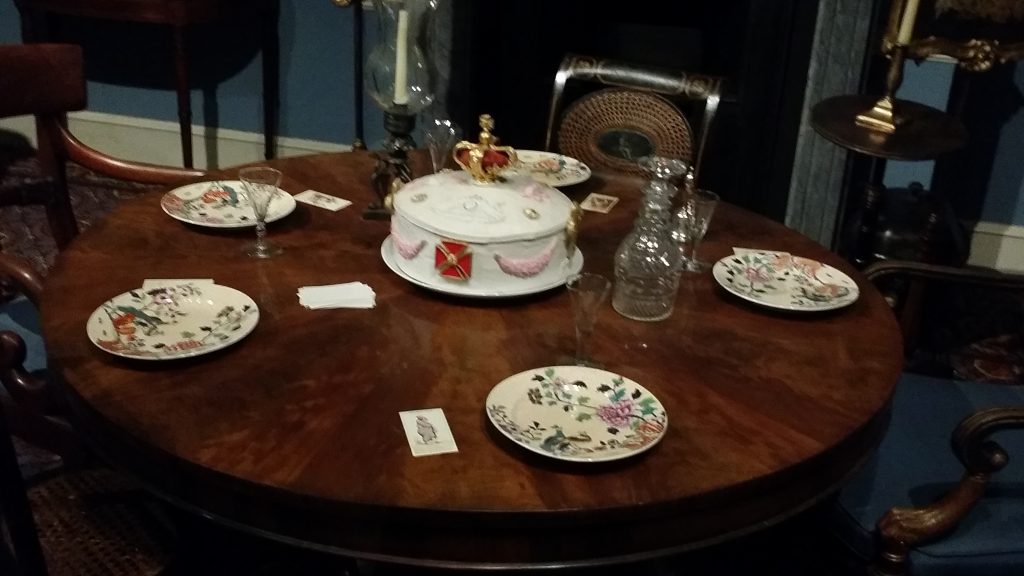
On the 11th day of Christmas
My true love sent to me
11 pipers piping; Ten lords a-leaping; Nine ladies dancing
Eight maids a-milking; Seven swans a-swimming
Six geese a-laying
Five golden rings (five golden rings)
Four calling birds; Three French hens; Two turtle-doves
And a partridge in a pear tree.
The Northern Sky at Night in January.
The Quadrantid meteor shower appears from the point of the Plough’s handle about January 3rd/4th. At the peak there may be 100 meteors an hour, but it will be low in the north-eastern sky and best seen from low light pollution areas. Twinkling above the Southern Horizon will be Sirius and this month’s brightest star. In the NE, the Plough can easily be seen. The Orion nebula south of Orion’s belt will be seen as a hazy patch with the naked eye. (from the Night Sky. Month by Month by Gater and Sparrow)
Twelfth Night Cake
Now is your last chance to make your Twelfth Day cake. This is a recipe from 1604 by Elinor Fettiplace:
Take a peck of flower, and fower pound of currance, one ounce of Cinamon, half an ounce of ginger, two nutmegs, of cloves and mace two peniworth, of butter one pound, mingle your spice and flower & fruit together, but as much barme [the yeasty froth from the top of fermenting beer barrels] as will make it light, then take good Ale, & put your butter in it, saving a little, which you must put in the milk, & let the milk boyle with the butter, then make a posset with it, & temper the Cakes with the posset drink, & curd & all together, & put some sugar in & so bake it.
I found this on the excellent www.britishfoodhistory.com, where you can find more cooking instructions for Twelfth Night Cake.
If you want a more modern recipe, the following is from the BBC. Please remember to add a pea, and a bean to the recipe. These will be useful once you have read my Twelfth Night post.
https://www.bbc.co.uk/food/recipes/twelfth_night_cake_53367
I have republished my post of the Chinese New Year which you can see here:
St. Genevieve’s Day and St Germanus January 3rd
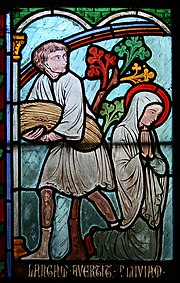
St Genevieve of Nanterre has her feast day today. Nanterre is an ancient settlement swallowed up by modern Paris. Genevieve is a most remarkable woman who met St Germanus of Auxerre on his way to Britain and became a ‘consecrated virgin’ at the age of 15.
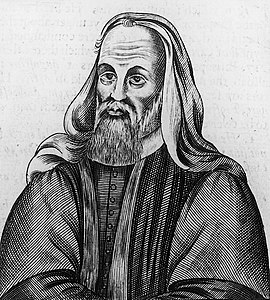
St Germanus is significant for post Roman studies because his life, written in the 5th Century, is one of the few written records of life in post-Roman Britain. He was sent to Britain because the Pelagian Heresy was endangering the Catholic version of Christianity. Pelagius was a highly educated British (or possibly Irish) priest who moved to Rome in the late 4th Century, living by a strict moral code, attacking Catholic laxity and opposing St Augustine of Hippo’s theory of Divine Grace. By contrast, Pelagius promoted human choice in salvation and denied the doctrine of original sin.
Germanus was sent to Britain, where he confronted Pelagian converts in a public debate which took place in a disused Roman amphitheatre. The author is not interested in Britain so does not tell us which town it was, but, it is mostly assumed to be St Albans, although London is possible. The Saint and his acolytes confound the heretics in the debate and, so, convert the town’s people sitting watching the debate. St Germanus goes to a nearby shrine of St Alban to thank God, falls asleep in a hut, and is miraculously saved from a fire. He comes across a man called a Tribune, helps defeat a Saxon army in the ‘Alleluia’ victory. The importance of all this is that it, in about 429AD, gives us a few glimpses of Britain two decades after the Romans have left.
The British Bishops were led in their heresy by someone called Agricola. The writer describes these bishops as ‘conspicuous for riches, brilliant in dress and surrounded by a fawning multitude’. The use of the title ‘Tribune’ in the story suggests Roman administrative titles are still in use 19 years after the date of the ‘formal’ end of Roman London, 410AD. The Alleluia victory over the Saxons also gives us an early date for Saxon presence in the country as an enemy.
St Albans is the favoured choice for the location of the event because. Bede tells us St Albans was born, martyred and commemorated in Verulamium, now called St Albans. Archaeology shows possible post Roman occupation of the town. And it has a famous Amphitheatre.
However, Gildas tells us St Alban was born in Verulamium but martyred in London, which makes sense as London was the late Roman Capital, and there is a church dedicated to St Albans close to the Roman Amphitheatre where Gildas tells us the execution took place. The Church cannot, unfortunately, be, archaeologically dated back to 429AD. Bede’s account of the martyrdom of St Albans is also somewhat farcical, as God divides the waters of the River Ver for Alban to get to his martyrdom more quickly. The bridge was said to be full of people walking to witness Alban’s execution. But the Ver is but a piddle, and it would be easy to walk over without needing a miracle to do it. This story is much more impressive if the River is the Thames.
As for Geneviève, she went on to lead an aesthetic life of fasting and prayer. In 451, she led the Parisians in prayer on the approach of the Huns led by Attila, and is credited with his decision not to attack the City. She lived to 89.
Incidently, Nanterre has an interesting prehistory. The name in Celtic means ‘enduring sacred site’, and a big cemetery found there makes it possibly the original site of Paris, or at least an important early site. Julius Caesar attended an assembly with local Gallic leaders in the area. The topography of Nanterre fits as well for the story as the Île de la Cité some argue.
Caesar went on to write a book about his experiences in Gaul and Britain, so some credence can be given to what he says about the Druids. This is an excerpt photographed from my book.
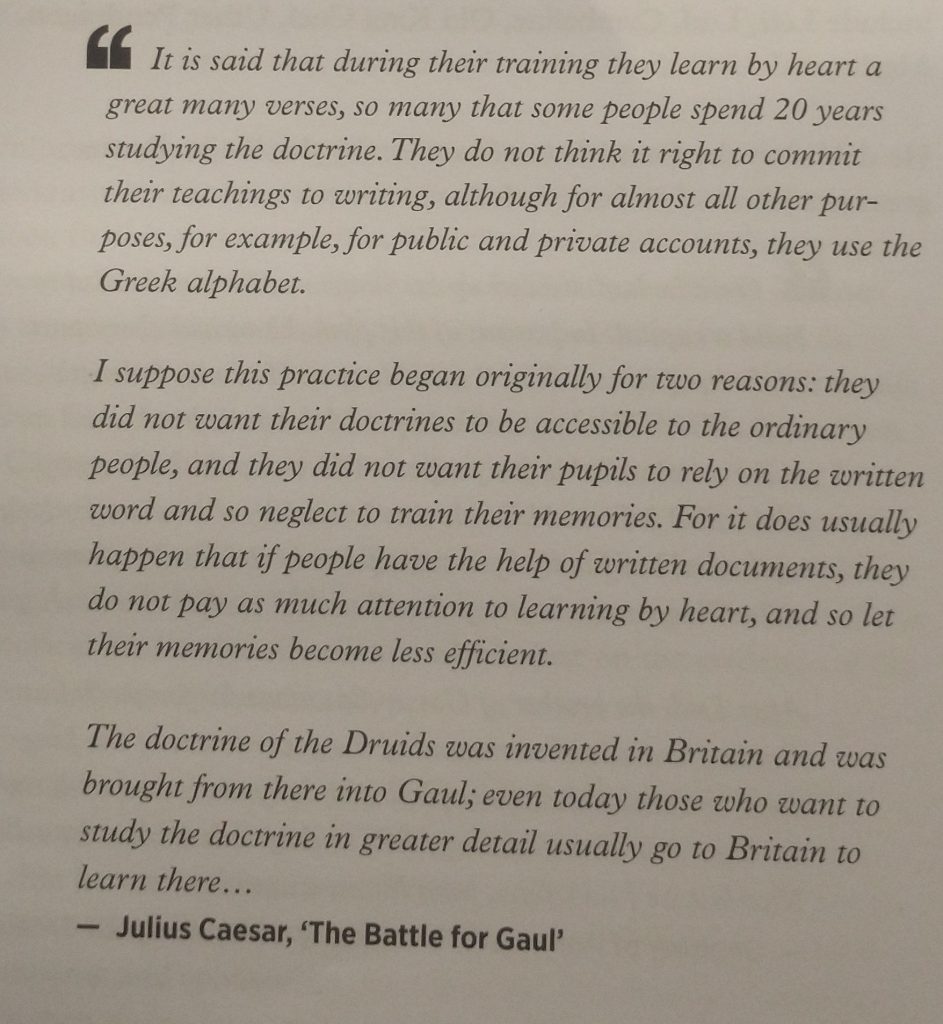
‘In Their Own Words – A Literary Companion To The Origins Of London‘ D A Horizons, 2009. Kevin Flude
To buy the Kindle version, click here. To buy a paperback (£7.00 including P&P) click on the PayPal link below or email kpflude AT anddidthosefeet.org.uk
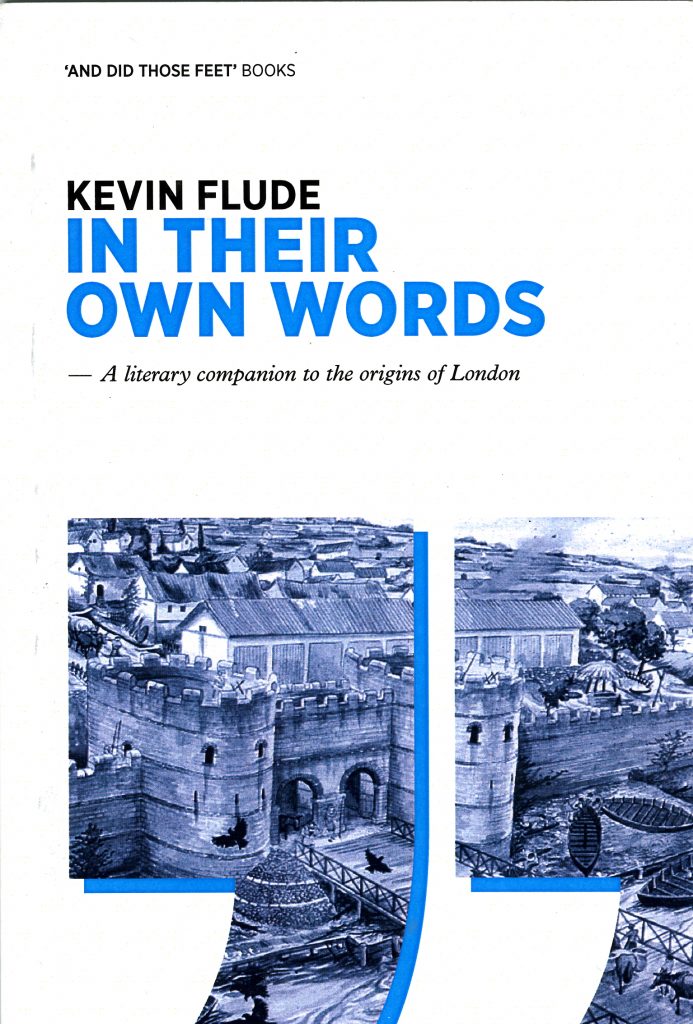
First written in January 2023, revised and republished January 2024.
Archive of Events and Walks (2024)
I keep an archive of the walks I have done each year. This is the first entry for 2024.
My new year’s resolutions for my walks are:
- Make the Virtual tours shorter.
- Try some new technology to make the virtual tours more like a walk.
- Begin publishing them.
I should note that 1 and 3 have long been on my list of desired improvements.
Ring in the New Year Virtual Walk
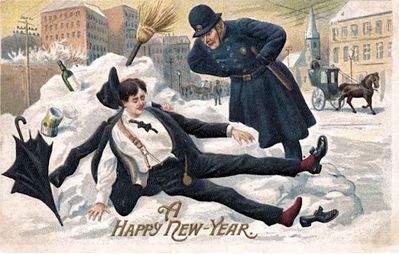
Monday 1st January 2024 7.00pm
On this Virtual Walk we look at how London has celebrated the New Year over the past 2000 years.
The New Year has been a time of review, renewal and anticipation
of the future from time immemorial. The Ancient Britons saw the Solstice as a symbol of a promise of renewal as the Sun was reborn. As the weather turns to bleak mid winter, a festival or reflection and renewal cheers everyone up. This idea of renewal was followed by the Romans, and presided over by a two headed God called Janus who looked both backwards and forwards. Dickens Christmas Carol was based on redemption and his second great Christmas Book ‘The Chimes’ on the renewal that the New Year encouraged.
We look at London’s past to see where and how the New Year was celebrated. We also explore the different New Years we use and their associated Calendars – the Pagan year, the Christian year, the Roman year, the Jewish year, the Financial year, the Academic year and we reveal how these began. We look at folk traditions, Medieval Christmas Festivals, Boy Bishops, Distaff Sunday and Plough Monday, and other Winter Festival and New Year London tradition and folklore.
At the end we use ancient methods to divine what is in store for us in 2024
ROMAN LONDON – A LITERARY & ARCHAEOLOGICAL WALK
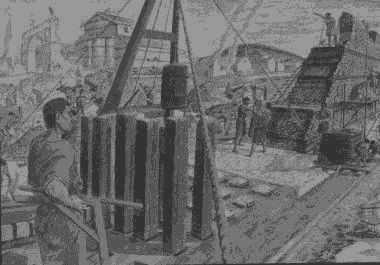
Sunday 21st Jan & 3rd March 2023 11.30 am Monument Underground Station
Our Guides will be Publius Ovidius Naso and Marcus Valerius Martialis who will be helped by Kevin Flude, former Museum of London Archaeologist, Museum Curator and Lecturer.
To book
We disembark at the Roman Waterfront by the Roman Bridge, and then explore the lives of the citizens as we walk up to the site of the Roman Town Hall, and discuss Roman politics. We proceed through the streets of Roman London, with its vivid and cosmopolitan street life via the Temple of Mithras to finish with Bread and Circus at the Roman Amphitheatre.
REVIEWS
“Kevin, I just wanted to drop you a quick email to thank you ever so much for your archaeological tours of London! I am so thrilled to have stumbled upon your tours! I look forward to them more than you can imagine! They’re the best 2 hours of my week! 🙂 Best, Sue
Jane Austen’s London Sunday Jan 21st 2.30 pm Green Park underground station,
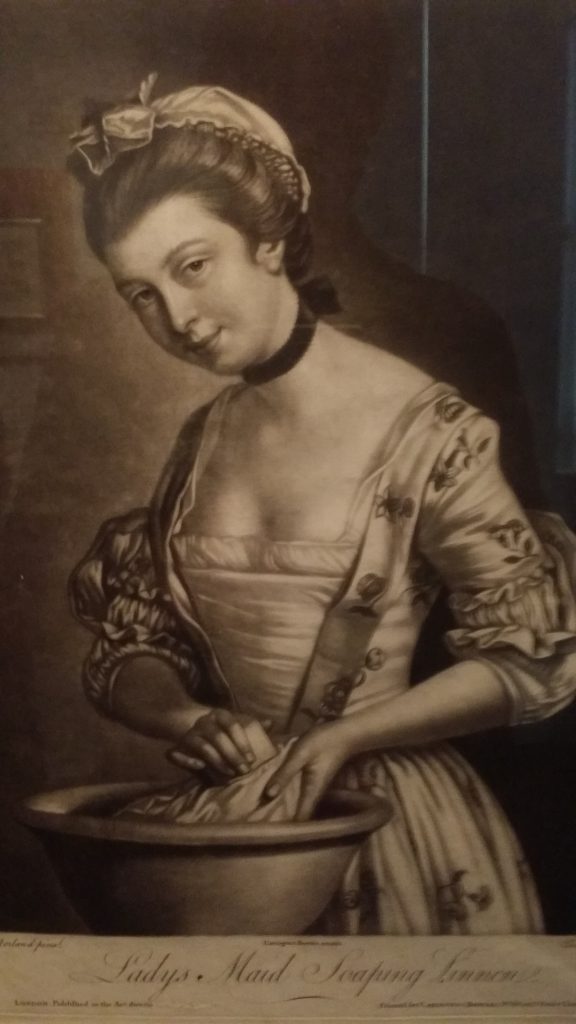
An exploration of Mayfair, the centre of the London section of Sense & Sensibility and where Jane came to visit her brother
“It is a truth universally acknowledged, that a Jane Austen devotee in possession of the good fortune of a couple of free hours today must be in want of this walk.”
People associate Jane Austen and her characters with a rural setting. But London is central to both Jane Austen’s real life and her literary life. So, this tour will explore Jane’s connections with London and give the background to Sense and Sensibility, a good part of which is based in this very area. We begin with the place Jane’s coach would arrive from Hampshire, and then walk the streets haunted by Willougby; past shops visited by the Palmers, the Ferrars; visit the location of Jane Austen’s brother’s bank and see the publisher of Jane’s Books. The area around Old Bond Street was the home of the Regency elite and many buildings and a surprising number of the shops remain as they were in Jane Austen’s day.
This is a London Walk Guided Walk lead by Kevin Flude
Myths, Legends, Archaeology and the Origins of London
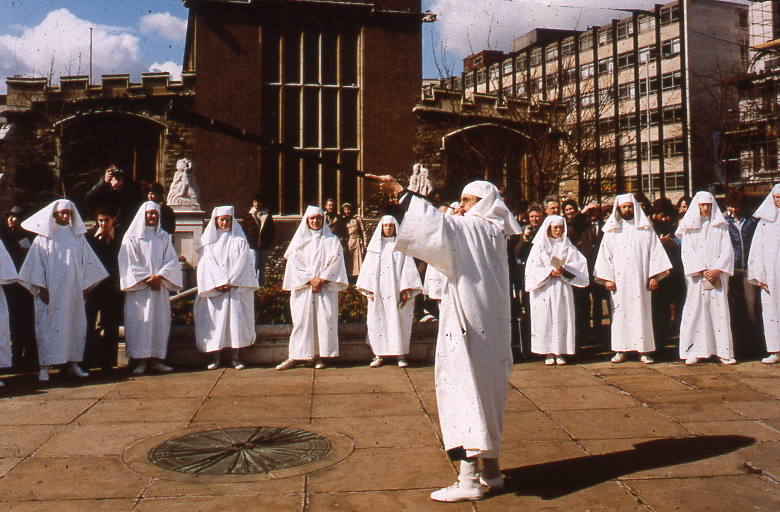
Sunday 4th February & Saturday 23 March 2024 11.30pm Tower Hill Underground
The walk tells the stories of our changing ideas about the origins of London during the Prehistoric, Roman and Saxon periods.
The walk is led by Kevin Flude, a former archaeologist at the Museum of London, who has an interest both in myths, legends and London’s Archaeology.
The walk will tell the story of the legendary origins of London which record that it was founded in the Bronze Age by an exiled Trojan and was called New Troy, which became corrupted to Trinovantum. This name was recorded in the words of Julius Caesar; and, then, according to Legend, the town was renamed after King Ludd and called Lud’s Dun. Antiquarians and Archaeologists have taken centuries to demolish this idea, and became convinced London was founded by the Romans. Recently, dramatic evidence of a Bronze Age presence in London was found.
When the Roman system broke down in 410 AD, historical records were almost non-existent, until the Venerable Bede recorded the building of St Pauls Cathedral in 604 AD. The two hundred year gap, has another rich selection of legends. which the paucity of archaeological remains struggles to debunk.
The walk will explore these stories and compare the myths and legends with Archaeological discoveries.
The route starts at Tower Hill, then down to the River at Billingsgate, London Bridge, and into the centre of Roman London
Tudor London – The City of Wolf Hall
Sunday 4th February 2024 2.15pm Barbican Underground Station
Tudor London – The City of Wolf Hall Virtual Tour Sunday 4th February 2024 7.30 pm To book
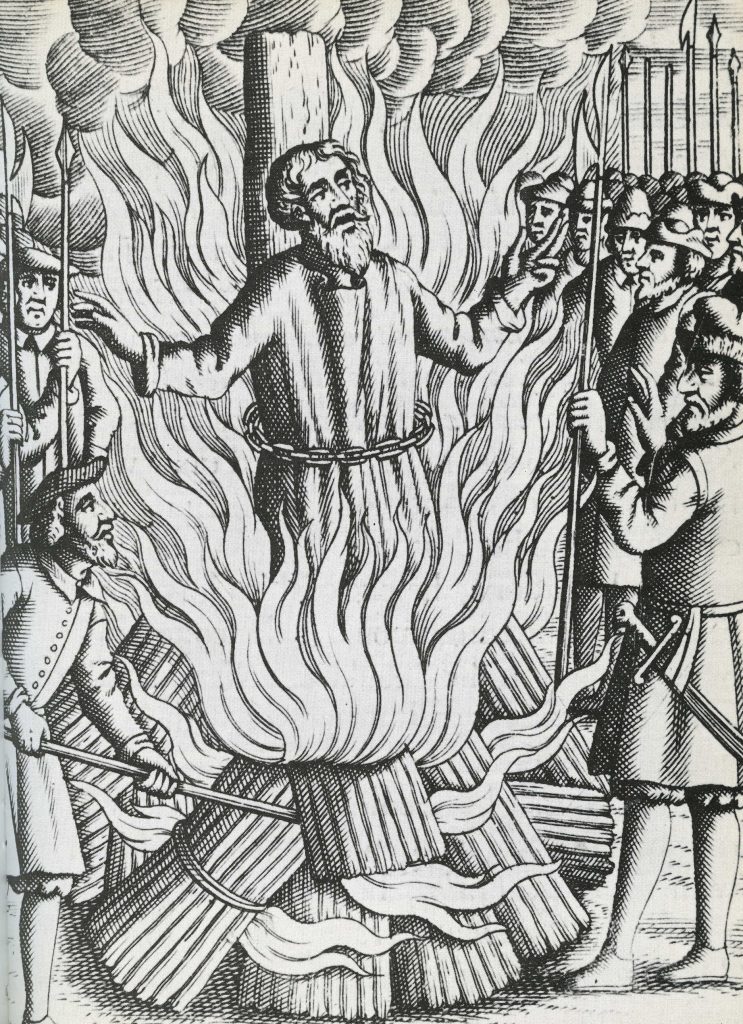
The Walk creates a portrait of London in the early 16th Century, with particular emphasis on the life and times of Thomas Cromwell and Thomas More during the Anne Boleyn years.
More and Cromwell had much in common, both lawyers, commoners, who rose to be Lord Chancellor to Henry VIII, and ended their careers on the block at Tower Hill.
The walk starts with an exploration of Smithfield – site of the stake where heretics were burnt alive and of St Bartholomew’s Monastery – given to Richard Rich after his decisive role in the downfall of Thomas More. We continue to St Paul where Martin Luther’s books were burnt, and later, where Puritans preached against dancing round the Maypole.
We walk along the main markets streets of London, to Thomas More’s birthplace, and to the site of More’s and Cromwell’s townhouses before, if time allows, finishing at the site of the Scaffold where More and Cromwell met their ends, overlooking where Anne Boleyn was incarcerated in the Tower of London
The Leap Year Pub Walk Thurs 6pm 29 February 2024 Tower Hill Underground

Thurs, 29 February 2024, 6pm Tower Hill Underground
We explore London, the Leap Year and 29th February through history
A strange amazing day – and walk – that comes only once every four years. For the rest of the time it does not “exist.” A day – and walk – of temporal tune-up. A day – and walk – of unlocked potential. A day – and a walk – of unlocked London.
As the Sun, Moon and Seasons have different cycles and don’t fit into a set number of days, Londoners have had to cope with fixes to their Calendars to align the Cosmos with everyday life. As we walk through the streets of the ancient City of London, we explore how Londoners organised and celebrated their year throughout history
One of the most popular forms of publication in London was the Almanac. It was full of seasonal advice, of prophecy, traditional wisdom, and important events past and future. We will look at Almanacs and Diaries to find how Londoners spent their Leap Year.
We start with the Romans at the City Wall, near the Tower of London, and walk through history until we reach a historic pub to celebrate the New Year.
The Leap Year Almanac of the Past Pub Walk is led by Kevin Flude, a lecturer, curator and former archaeologist at the Museum of London. Join him to explore London’s History through its celebrations, festivals, calendars and almanacs.
This is a London Walks Guided Walk.
Roman London – A Literary & Archaeological Walk Sun 11.30 am 3rd March 2024 Monument Underground Station To book
Jane Austen’s London Sun 2.30 pm 3rd March 2024 Green Park Underground station (Green Park Exit. Fountain in Green Park), To book
Myths, Legends, Archaeology and the Origins of London Sunday 11.30am 23rd March 2024 Tower Hill Underground
London. 1066 and All That Walk
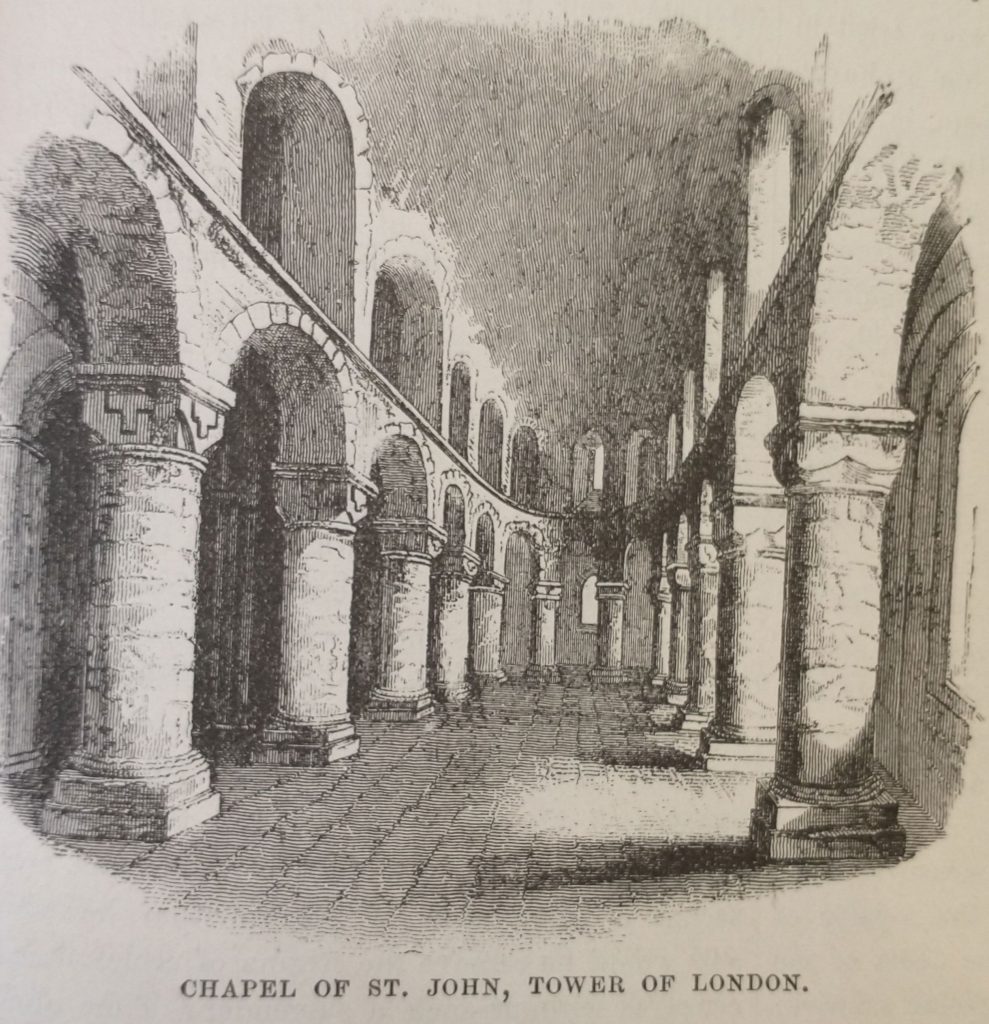
Sunday 2.30pm 23rd March 2024 Blackfriars Underground Station
The Archaeological Walk that explores the City of London at the end of the Saxon period and at the beginning of the Norman.
The Norman Conquest of 1066 defines Britain in a way unmatched by any other event. And on this walk we explore the London that William conquered and how he changed England for all time.
London was England’s most important City, but not yet the capital. It was crucial to William in his attempt to conquer the realm. But his army could not fight their way across the heavily defended London Bridge after the defeat of the English King, Harold, at the Battle of Hastings.
The future of England was in the balance as he ravaged the country seeking a way across the river and to persuade the English that resistance was hopeless.
Once across the river, the English leaders sued for peace, and William was crowned at the newly built Westminster Abbey. The English hoped for a strong King who would rule with the people. But William began by building Castles to oppress the Citizens, and soon swept aside the English Aristocracy and establishment and replaced them with the Conquerors.
This was a death blow to Anglo-Saxon culture, but the City made an accommodation with the new regime and the first Lord Mayor of London was an Englishman.
So, on the walk we explore the Late Saxon City of London, and how it changed in the last 11th and 12th Centuries.
Walk is by Kevin Flude, former Archaeologist at the Museum of London
Kevin
To Book:
New Year’s Day & Almanacs—January 1st
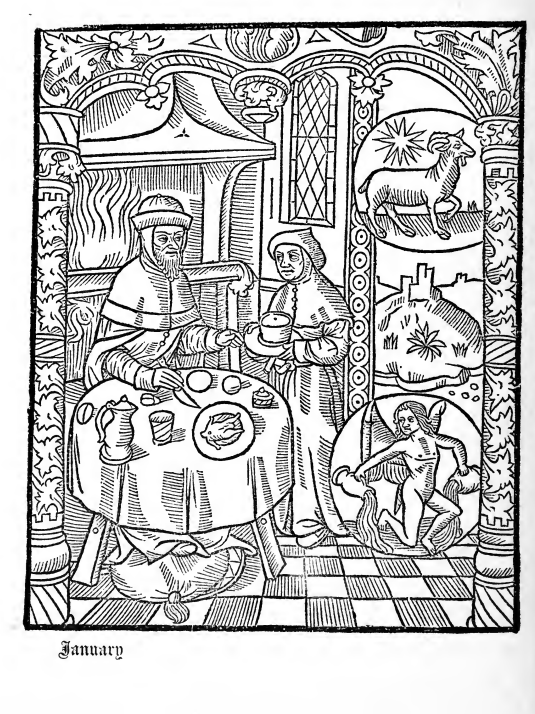
Alcohol poisoning might mean this is not the day to think about the New Year and make our resolutions but we might turn to an almanac to see what the year has ahead. Newspapers and the web have now taken over largely from almanacs. They print articles about the upcoming highlights of the Sporting Year or the Musical year and so one. But almanacs are still produced and arguably grew from medieval manuscript Books of Hours and, in particular, the 1493 Kalendar of Shepherds which was published in Paris. Each month was described with the addition of important information for farmers. By the 1600’s almanacs were the most published form of book other than the Bible. Lauren Kassell in ‘Almanacs and Prognostications’ reports estimates that by 1660 one third of every household had one.

Originally, they had a Calendar for each month, and information about the phases of the month, the tides, predictions of the weather, and health issues likely to occur at that time of the year. Astrology was an important element of them. London Almanacs contained further information about the year, its ceremonies and elections of officials. And this informational side to the almanac grew, they began to include lists such as lists of monarchs, and interesting stories, verse foretelling the weather, recipes and cures. Almanacs are the source of most of the quotes used in blogs such as mine which look at all things calendrical.
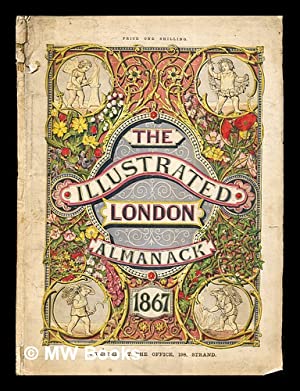
Here, is a verse about January from the Kalendar of Shepherds
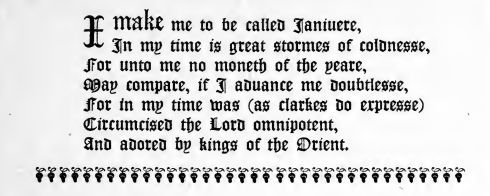
I have republished my post of the Chinese New Year which you can see here:
Hangover Cures & Bacchus – January 1st
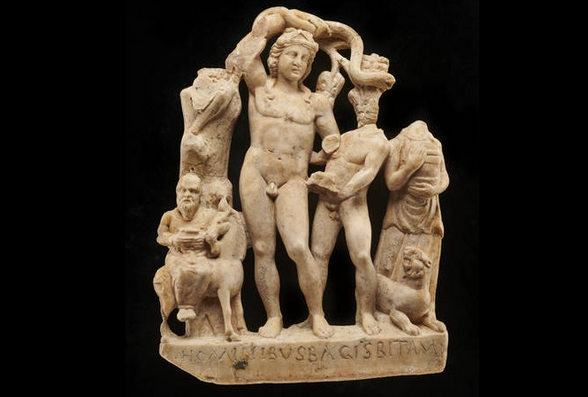
On the eighth day of Christmas
my true love sent to me:
8 Maids a Milking; 7 Swans a Swimming; 6 Geese a Laying
5 Golden Rings
4 Calling Birds; 3 French Hens; 2 Turtle Doves
and a Partridge in a Pear TreeThe 8th day is the day of the Throbbing Head. Leonard Cohen wrote in ‘Closing Time’ about drinking to excess. I like to think he refers to Christmas and New Year’s Day:
‘And the whole damn place goes crazy twice
And it’s once for the devil and it’s once for Christ
But the boss don’t like these dizzy heights
We’re busted in the blinding lights of closing time.‘
So what you need is a hangover cure. Nature provides many plants that can soothe headaches. And in the midst of the season of excess, lets start with a hangover cure.

Ivy, ‘is a plant of Bacchus’…. ‘the berries taken before one be set to drink hard, preserve from drunkenness…. and if one hath got a surfeit by drinking of wine, the speediest cure is to drink a draft of the same wine, wherein a handful of ivy leaves (being first bruised) have been boiled.’
Culpeper Herbal 1653 quoted in ‘the Perpetual Almanac’ by Charles Kightly
The image of Bacchus above is from a fascinating article by the Museum of London on wine making in Roman Britain. Bacchus is often shown with an ivy crown around his head as Romans were wont to wear them to fend of hangovers.
Back to our hangover cures:

One of the best documented is willow bark. Here is a record of how simple it could be to use:
‘I am nearly 70 years old and was born and bred in Norfolk… My father, if he had a ‘skullache’ as he called it, would often chew a new growth willow twig, like a cigarette in the mouth.’
‘A Dictionary of Plant Lore by Roy Vickery (Pg 401)
In the 19th Century Willow was found to contain salicylic acid from which aspirin was derived. As a child I remember chewing liquorice sticks in a similar way, although supposedly for the pleasure and the sweetness not for the many medicinal virtues of the plant.
Yesterday’s weather on the 5th Day of Christmas was warm and wet. This means, according to Gervase Markham, that the 5th Month, May will be sunny and warm. (source: ‘The English Husbandman’ of 1635. )
The Day of Nymphs in Greece dedicated to Artemis, Andromeda, Ariadne, Ceres. (according to the Goddess Book of Days by Diane Stein.)
Archive of Events and Walks (2023)
I update this from time to time to keep track of walks I have done and to keep them on the internet in case anyone is searching for someone to give a walk on one of ‘my’ subjects.
The ‘London Before and After the Roman invasion Walk’ was a brand new walk, although I had done it as a virtual tour.. But as an actual walk it was new and quite a challenge. Although the Roman finds are concentrated in an area that can reasonably be ‘walked’ the prehistoric element is spread all over Greater London. So I did quite a lot of waving my arms and saying ‘Over there, archaeologists found….’ or ‘To the South East was the Kingdom of the Atrebates, whose King Verica fled to the Romans asking their help to regain his throne. ‘ or ‘Claudius crossed the Thames with Nine Elephants some where, almost certainly to the West of us.’ It went quite well, although the sunny weather changed into a downpour which made the climax of the tour a bit of a damp squib.
But I learnt a lot, because it made me read Dominic Perring’s new book on Roman London ‘London in the Roman World’ more closely than I otherwise would have. I should say that I worked with Dominic when we were young archaeologists at the Museum of London. He is now a Professor at the Institute of Archaeology, and, occasionally, I am lucky enough to join him and a few archaeological friends, watching our football team, Tottenham Hotspur.
Tomorrow is my Plough Tuesday as I spent today, my last day of my ‘holiday’ period, bringing my boat up the Regent’s Canal to outside my flat in Hackney and what a glorious January day it was! Tomorrow I have a meeting to sort out my Road Scholar lecturing for the year and Wednesday is my first day lecturing at College.
Below are the walks I have done so far this year
Ring in the New Year Virtual Walk

Monday 1st January 2024 7.00pm
On this Virtual Walk we look at how London has celebrated the New Year over the past 2000 years.
The New Year has been a time of review, renewal and anticipation
of the future from time immemorial. The Ancient Britons saw the Solstice as a symbol of a promise of renewal as the Sun was reborn. As the weather turns to bleak mid winter, a festival or reflection and renewal cheers everyone up. This idea of renewal was followed by the Romans, and presided over by a two headed God called Janus who looked both backwards and forwards. Dickens Christmas Carol was based on redemption and his second great Christmas Book ‘The Chimes’ on the renewal that the New Year encouraged.
We look at London’s past to see where and how the New Year was celebrated. We also explore the different New Years we use and their associated Calendars – the Pagan year, the Christian year, the Roman year, the Jewish year, the Financial year, the Academic year and we reveal how these began. We look at folk traditions, Medieval Christmas Festivals, Boy Bishops, Distaff Sunday and Plough Monday, and other Winter Festival and New Year London tradition and folklore.
At the end we use ancient methods to divine what is in store for us in 2023..
The virtual walk finds interesting and historic places in the City of London to link to our stories of Past New Year’s Days. We begin with the Druids at Tower Hill, and walk around the Roman City of London, and through London History until we get to St Pauls Cathedral
The London Winter Solstice Virtual Tour

Fri 22 Dec 2023 19:30
We explore London’s History through its celebrations, festivals, calendars and almanacs of the Winter Solstice
Winter Solstice festivals have been a time of review, renewal and anticipation of the future from time immemorial. The Ancient Britons saw the Solstice as a symbol of a promise of renewal as the world entered bleak mid winter. The Roman season was presided over by Janus, a two headed God who looked both backwards and forwards, and Dickens based his second great Christmas Book on the renewal that the New Year encouraged.
We look at London’s past to see where and how the Solstice might be celebrated. We also explore the different Calendars – the Pagan year, the Christian year, the Roman year, the Jewish year, the Financial year, the Academic year and we reveal how these began. We look at folk traditions, Medieval Christmas Festivals, Boy Bishops, Distaff Sunday and Plough Monday, and other London winter traditions and folklore.
At the end we use ancient methods to divine what is in store for us in 2023.
To Book:
Jane Austen’s London Walk

Jane Austen’s London Walk
a Special Christmas version on 23 December 2023 & normal one on 21st January
Sat 2.30 pm Green Park underground station, London (By the Fountain, just outside the Green Park exit of the Tube Station)
To Book:
An exploration of Mayfair, the centre of the London section of Sense & Sensibility and where Jane came to visit her brother
“It is a truth universally acknowledged, that a Jane Austen devotee in possession of the good fortune of a couple of free hours today must be in want of this walk.”
People associate Jane Austen and her characters with a rural setting. But London is central to both Jane Austen’s real life and her literary life. So, this tour will explore Jane’s connections with London and give the background to Sense and Sensibility, a good part of which is based in this very area. We begin with the place Jane’s coach would arrive from Hampshire, and then walk the streets haunted by Willougby; past shops visited by the Palmers, the Ferrars; visit the location of Jane Austen’s brother’s bank and see the publisher of Jane’s Books. The area around Old Bond Street was the home of the Regency elite and many buildings and a surprising number of the shops remain as they were in Jane Austen’s day.
This is a London Walk Guided Walk lead by Kevin Flude
To Book:
Christmas With Jane Austen Virtual London Tour

Saturday 23 December 2023 7.30pm
We look at how Jane Austen spent Christmas and at Georgian Christmas traditions and amusements.
“It is a truth universally acknowledged, that a Jane Austen devotee in possession of the good fortune of a couple of free hours must be in want of this virtual walk.”
This is a special walk, which looks at the traditions of Christmas during the Regency period and how Jane Austen might have celebrated it. It will give some background to Jane Austen’s life and her knowledge of London. We used her novels and her letters to find out what she might have done at Christmas, but also at how Christmas was kept in this period, and the range of ‘Curiosities, Amusements, Exhibitions, Public Establishments, and Remarkable Objects in and near London available to enjoy.
This is a London Walks Guided Walk by Kevin Flude, Museum Curator and Lecturer.
Review: ‘Thanks, again, Kevin. These talks are magnificent!’
To Book:
Roman London – A Literary & Archaeological Walk Saturday 16 Dec & 21st Jan 2023 11.30 am Monument Underground Station To book
Dickens London. Life, Work and Christmas Virtual Tour
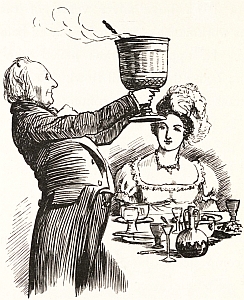
Friday 15th December 2023 7.30pm
A Virtual Tour of Dickens London with a dash of Dickensian Christmas
The Virtual Tour weaves an exploration of Victorian London with Dickens London Life and writing. On the tour we have a look at London at Christmas and the contribution Dickens made to it by his Christmas Books
Dickens writing always has a moral element as exemplified by his Christmas Books. ‘Christmas Carol’ was based on redemption and his second great Christmas Book ‘The Chimes’ on the renewal that the New Year encouraged.
We start in Southwark, visit sites associated with the Christmas Books and others and end at Staple Inn with the Christmas Book ‘The Haunted Man’.
Chaucer’s Medieval London Guided Walk
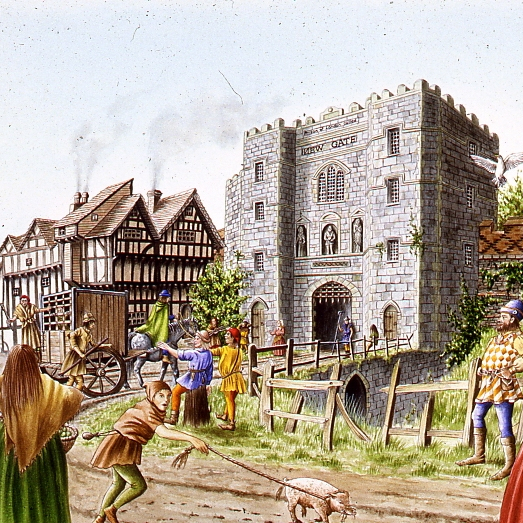
Aldgate Underground Sunday 12 November 2023 11.30pm
A Walk around Medieval London following in the footsteps of its resident medieval poet – Geoffrey Chaucer
One of the spectators at the Peasants Revolt was Geoffrey Chaucer, born in the Vintry area of London, who rose to be a diplomat, a Courtier and London’s Customs Officer. He lived with his wife in the Chamber above the Gate in the City Wall at Aldgate. His poetry shows a rugged, joyous medieval England including many scenes reflecting life in London. His stories document the ending of the feudal system, growing dissatisfaction with the corruption in the Church, and shows the robust independence with which the English led their lives.
His work helped change the fashion from poetry in French or Latin to acceptance of the English language as suitable literary language. This was helped by the growth of literacy in London as its Merchants and Guildsmen became increasingly successful. In 1422, for example, the Brewers decided to keep their records in English ‘as there are many of our craft who have the knowledge of reading and writing in the English idiom.’
Chaucer and other poets such as Langland give a vivid portrait of Medieval London which was dynamic, successful but also torn by crisis such as the Lollard challenge to Catholic hegemony, and the Peasants who revolted against oppression as the ruling classes struggled to resist the increased independence of the working people following the Black Death.
A walk which explores London in the Middle Ages, We begin at Aldgate, and follow Chaucer from his home to his place of work at the Customs House, and then to St Thomas Chapel on London Bridge, and across the River to where the Canterbury Tales start – at the Tabard Inn.
This is a London Walks event by Kevin Flude
London before and after The Roman Invasion
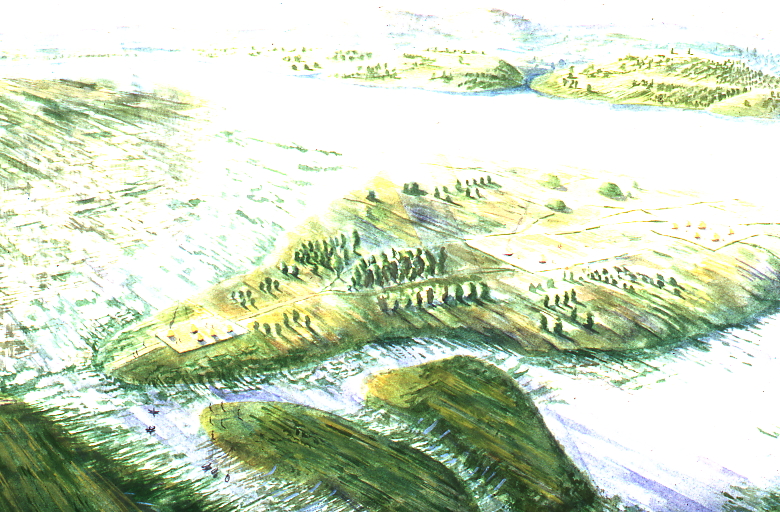
October 29th
The walk looks into the evidence for a prehistoric London and tells the story of the coming of the Romans in AD43
The walk is led by Kevin Flude, a former archaeologist at the Museum of London.
The walk investigates the City of London before and after the the Roman Conquest. What is the evidence for settlement before the Romans set up town of Londinium? Why did the Romans establish the town on this spot? Who were the early Roman Londoners and what made their choice of site so successful?
The fledgling Town was then burnt down by Queen Boudiccan and her Icenian rebels. We look at the evidence for the Revolt and London’s recovery to became the capital of Britain.
This is a London Walks Guided Walk. Look at their web site for a list of other of their amazing walks.
REVIEWS (from London Walks website)
“Kevin, I just wanted to drop you a quick email to thank you ever so much for your archaeological tours of London! I am so thrilled to have stumbled upon your tours! I look forward to them more than you can imagine! They’re the best 2 hours of my week! 🙂 Best, Sue
London Before London – Prehistoric London Virtual Walk

October 29th
An exploration of London before the foundation of Londinium
It was long thought that London was founded by a Trojan Exile in the Late Bronze Age. But historical analysis and archaeological excavation gradually demoted the idea to a myth.
On this tour we explore what was in the London area before the Romans. We begin at Heathrow and tour Greater London for evidence from the Paleolithic to the invasion of the Emperor Claudius.
We concentrate on the period since the introduction of farming, and bring together evidence for the prehistoric Kingdoms that controlled the area on the eve of the Invasion. We look for henges, barrows, hill forts, hut circles and look at genetic evidence for identity of prehistoric Londoners. The tour will end in the City.
This is a London Walks event by Kevin Flude, ex Museum of London Archaeology and Museum Curator
The Peasants Revolt Anniversary Guided Walk (virtual tour on the same day at 7.30)
Aldersgate Underground Sunday 11th June 2023 10.45am
A Virtual Walk tracking the progress of the Peasants as they take control of London
On the anniversary of the Peasants Revolt we reconstruct the events that shook the medieval world. In June 1381, following the introduction of the iniquitous Poll Tax, England’s government nearly fell, shaken to the core by a revolt led by working men. This dramatic tour follows the events of the Revolt as the Peasants move through London in June 1381.
We met up with the Peasants at Aldgate, force our way into the City. We march on the Tower of London as the King makes concessions by ending serfdom, at Mile End. But the leaders take the mighty Tower of London and behead the leaders of Richard’s government. Attacks follow on the lawyers in the Temple, the Prior at St. John’s of Jerusalem, Flemish Londoners, and on Lambeth and Savoy Palaces.
The climax of the Revolt comes at Smithfield where a small Royal party confront the 30,000 peasants.
To Book:
Tudor London – The City of Wolf Hall
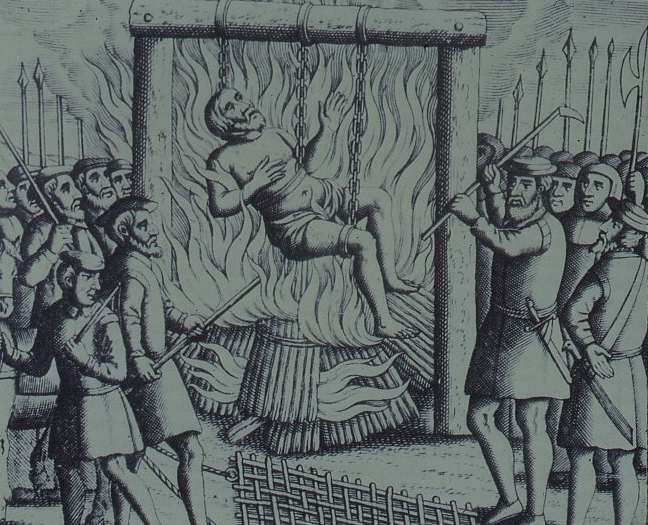
Friday 28 April And June 4th 2023 5.15pm Barbican Underground Station
The Walk creates a portrait of London in the early 16th Century, with particular emphasis on the life and times of Thomas Cromwell and Thomas More
More and Cromwell had much in common, both lawyers, commoners, who rose to be Lord Chancellor to Henry VIII, and ended their careers on the block at Tower Hill.
The walk starts with an exploration of Smithfield – site of the stake where Heretics were burnt alive and to St Bartholomew’s Monastery – given to Richard Rich after his decisive role in the downfall of Thomas More. We continue to St Paul where Martin Luther’s books where burnt, and later, were Puritans attacked dancing round the Maypole. We walk along the main markets streets of London, to Thomas More’s birthplace, and to the site of More’s and Cromwell’s townhouses before, if time allows, finishing at the site of the Scaffold where More and Cromwell met their ends.
Myths & Legends of London May Eve Special Guided Walk

Sunday 30th April 2023 3.00pm Tower Hill Tube Station
The walk tells the story of London’s legendary past, explores May Day and the Celtic Festival of Beltane
The walk is led by Kevin Flude, a former archaeologist at the Museum of London, who has an interest both in the archaeological evidence as well as the myths and legends of London’s origin.
The walk is one of a series about London’s Myths and Legends which take place on or around one of the significant festivals of the calendar. On this walk we celebrate May Day, or Beltane – the celebration of the coming of Summer.
The walk begins with the tale of London’s legendary origins in the Bronze Age by an exiled Trojan called Brutus. Stories of Bladud, Bellinus, Bran, Vortigern and Arthur will be interspersed with how they fit in with archaeological discoveries. As we explore the City we also look at evidence for ‘Celtic’ origins of London and how May Day may have been celebrated in London.
The route starts at Tower Hill, then down to the River Thames at Billingsgate, to London Bridge and Southwark Cathedral, into the valley of the River Walbrook, past the Temple of Mithras, along Cheapside towards the Roman Amphitheatre and St Pauls.
This is a London Walks guided walk. Look at their web site for a list of other of their amazing walks.
REVIEWS (from London Walks website)
“Kevin, I just wanted to drop you a quick email to thank you ever so much for your archaeological tours of London! I am so thrilled to have stumbled upon your tours! I have wanted to be an archaeologist since 1978 at the ripe old age of 8 years,… I was told for years that I could not be an archaeologist [for any number of reasons, which I now realise are completely ridiculous!], so I ended up on a different course of study. And now at the age of 50, it is my one great regret in life. So, I am thoroughly enjoying living vicariously through you, the digs you’ve been on, and the history you bring to life for us! British archaeology would have been my specific area of study had I pursued it. ?? Thank you SO MUCH for these! I look forward to them more than you can imagine, and honestly, I’ll be sad if you get them down to 1.5 hours! They’re the best 2 hours of my week! 🙂 Best, Sue
To Book:
Myths, Legends of London May Day Special Virtual Tour
Monday 1st May 2023 7.30pm
The virtual tour tells the story of London’s myths and legends and the Celtic Festival of Beltane
The virtual tour is led by Kevin Flude, a former archaeologist at the Museum of London, who has an interest both in the archaeological evidence as well as the myths and legends of London’s origin.
It is one of a series about London’s Myths and Legends which take place on or around one of the significant festivals of the Celtic calendar. On this tour we celebrate May Day, or Beltane – the celebration of the coming of Summer.
The walk begins with the tale of London’s legendary origins in the Bronze Age by an exiled Trojan called Brutus. Stories of Bladud, Bellinus, Bran, Vortigern and Arthur will be interspersed with how they fit in with archaeological discoveries. As we explore the City we also look at evidence for ‘Celtic’ origins of London and how May Day was celebrated in London.
The virtual route starts at Tower Hill, then down to the River Thames at Billingsgate, to London Bridge and Southwark Cathedral, to the Roman Forum at the top of Cornhill, into the valley of the River Walbrook, passed the Temple of Mithras, along Cheapside to the Roman Amphitheatre, and finishing up in the shadow of St Pauls
This is a London Walks Virtual Walk. Look at their web site for a list of other of their amazing walks.
To Book:
https://www.eventbrite.co.uk/e/myths-and-legends-of-london-special-may-day-virtual-tour-tickets-601341648057
Chaucer’s Medieval London Guided Walk
Aldgate Underground Sunday 16 April 2023 11.30pm
A Walk around Medieval London following in the footsteps of its resident medieval poet – Geoffrey Chaucer
One of the spectators at the Peasants Revolt was Geoffrey Chaucer, born in the Vintry area of London, who rose to be a diplomat, a Courtier and London’s Customs Officer. He lived with his wife in the Chamber above the Gate in the City Wall at Aldgate. His poetry shows a rugged, joyous medieval England including many scenes reflecting life in London. His stories document the ending of the feudal system, growing dissatisfaction with the corruption in the Church, and shows the robust independence with which the English led their lives.
His work helped change the fashion from poetry in French or Latin to acceptance of the English language as suitable literary language. This was helped by the growth of literacy in London as its Merchants and Guildsmen became increasingly successful. In 1422, for example, the Brewers decided to keep their records in English ‘as there are many of our craft who have the knowledge of reading and writing in the English idiom.’
Chaucer and other poets such as Langland give a vivid portrait of Medieval London which was dynamic, successful but also torn by crisis such as the Lollard challenge to Catholic hegemony, and the Peasants who revolted against oppression as the ruling classes struggled to resist the increased independence of the working people following the Black Death.
A walk which explores London in the Middle Ages, We begin at Aldgate, and follow Chaucer from his home to his place of work at the Customs House, and then to St Thomas Chapel on London Bridge, and across the River to where the Canterbury Tales start – at the Tabard Inn.
This is a London Walks event by Kevin Flude
Archaeology of London Guided Walk
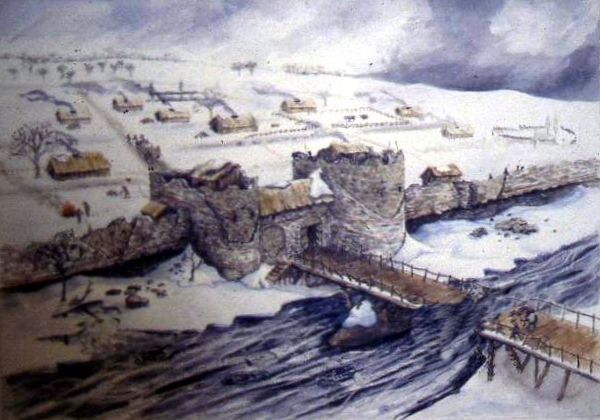
Sunday 16th April and 4th June 2023 2.30 Exit 3 Bank Underground Station
Legend says that London was founded as New Troy. Historians believed it was founded as Londinium after the Bridge was built by the legionaries of the Emperor Claudius in AD 43. Archaeologists in the 1970s and 1980s discovered that London was refounded as Lundenwic in the 7th Century and again in the 9th Century when it was called Lundeburg.
This walk tells the epic tale of the uncovering of London’s past by Archaeologists. And provides an insight into the dramatic history of the Capital of Britannia, and how it survived revolts, fires, plagues, and reacted to the decline and fall of the Roman Empire. It became the foremost English City but with periods under Viking and Norman control.
We tell the story in the streets of the City of London, beginning in the valley of the River Walbrook by the Temple of Mithras, and visit many sites where important archaeological discoveries were made, including the Roman Forum, Amphitheatre. Bath Houses, Temples, Roman roads and the City Walls.
Chaucer’s London To Canterbury Virtual Pilgrimage
Sunday 16th April 2023 7.30pm
A Virtual Walk from Chaucer’s London on pilgrimage along the route of the the Canterbury Tales to Canterbury
One of the spectators at the Peasants Revolt was Geoffrey Chaucer, born in the Vintry area of London, who rose to be a diplomat, a Courtier and London’s Customs Officer. He lived with his wife in the Chamber above the Gate in the City Wall at Aldgate, while he wrote the Canterbury Tales.
His poetry shows a rugged, joyous medieval England including many scenes reflecting life in London.
His stories document the ending of the feudal system, growing dissatisfaction with the corruption in the Church, and shows the robust independence with which the English led their lives, following the Black Death.
A walk which explores London in the Middle Ages, and takes us on the pilgrimage to Canterbury. We begin at Aldgate, and follow Chaucer from his home to his place of work at the Customs House. We cross to Southwark via the famous London Bridge where we start the Pilgrimage at St Thomas Chapel. Then to the Tabard to meet the Pilgrims and onto the Old Kent Road to Canterbury.
This is a London Walks event. Look at their web site (www.walks.com) for a list of other of their amazing walks.
Archaeology of London Guided Walk Sunday 2nd April 2023 11:15 Exit 3 Bank Underground Station
A TALE OF FOUR CITIES
Legend says that London was founded as New Troy. Historians believed it was founded as Londinium after the Bridge was built by the legionaries of the Emperor Claudius in AD 43. Archaeologists in the 1970s and 1980s discovered that London was refounded as Lundenwic in the 7th Century and again in the 9th Century when it was called Lundeburg.
This walk tells the epic tale of the uncovering of London’s past by Archaeologists. And provides an insight into the dramatic history of the Capital of Britannia, and how it survived revolts, fires, plagues, and reacted to the decline and fall of the Roman Empire. It became the foremost English City but with periods under Viking and Norman control.
We tell the story in the streets of the City of London, beginning in the valley of the River Walbrook by the Temple of Mithras, and visit many sites where important archaeological discoveries were made.
Jane Austen’s London
Sat 2.30 pm 02/04/23 Green Park underground station, London (north exit, on the corner)
An exploration of Mayfair, the centre of the London section of Sense & Sensibility and where Jane came to visit her brother
“It is a truth universally acknowledged, that a Jane Austen devotee in possession of the good fortune of a couple of free hours today must be in want of this walk.”
People associate Jane Austen and her characters with a rural setting. But London is central to both Jane Austen’s real life and her literary life. So, this tour will explore Jane’s connections with London and give the background to Sense and Sensibility, a good part of which is based in this very area. We begin with the place Jane’s coach would arrive from Hampshire, and then walk the streets haunted by Willougby; past shops visited by the Palmers, the Ferrars; visit the location of Jane Austen’s brother’s bank and see the publisher of Jane’s Books. The area around Old Bond Street was the home of the Regency elite and many buildings and a surprising number of the shops remain as they were in Jane Austen’s day.
This is a London Walk Guided Walk lead by Kevin Flude
CHAUCER’S MEDIEVAL LONDON VIRTUAL WALK
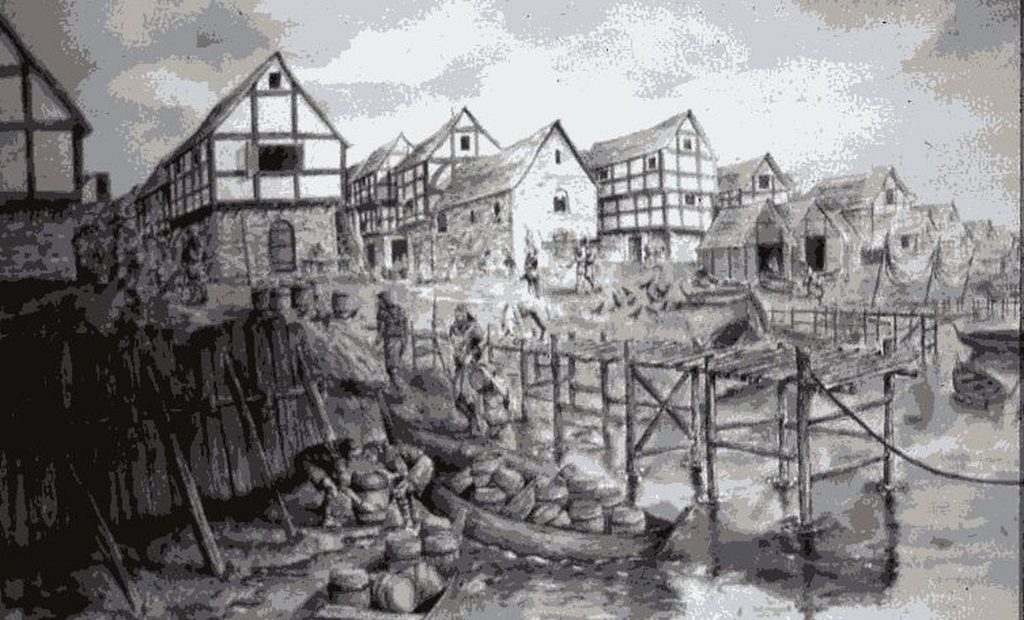
Sunday 12 February 2023 7.30pm
A Virtual Walk around Medieval London following in the footsteps of its resident medieval poet – Geoffrey Chaucer
One of the spectators at the Peasants Revolt was Geoffrey Chaucer, born in the Vintry area of London, who rose to be a diplomat, a Courtier and London’s Customs Officer. He lived with his wife in the Chamber above the Gate in the City Wall at Aldgate. His poetry shows a rugged, joyous medieval England including many scenes reflecting life in London. His stories document the ending of the feudal system, growing dissatisfaction with the corruption in the Church, and shows the robust independence with which the English led their lives.
His work helped change the fashion from poetry in French or Latin to acceptance of the English language as suitable literary language. This was helped by the growth of literacy in London as its Merchants and Guildsmen became increasingly successful. In 1422, for example, the Brewers decided to keep their records in English ‘as there are many of our craft who have the knowledge of reading and writing in the English idiom.’
Chaucer and other poets such as Langland give a vivid portrait of Medieval London which was dynamic, successful but also torn by crisis such as the Lollard challenge to Catholic hegemony, and the Peasants who revolted against oppression as the ruling classes struggled to resist the increased independence of the working people following the Black Death.
A walk which explores London in the Middle Ages, We begin at Aldgate, and follow Chaucer from his home to his place of work at the Customs House, and then to St Thomas Chapel on London Bridge, and through London to Poultry, Bucklersbury and Cheapside before visiting the Guildhall and St Pauls. We will walk in the muddy City Streets, exploring the unhealthy conditions and poverty amidst great riches and pageantry.
This is a London Walks event by Kevin Flude
THE REBIRTH OF SAXON LONDON ARCHAEOLOGY VIRTUAL WALK

Sunday 29 January 2023 7.30pm
An exploration of what happened following the Roman Period. How did a Celtic speaking Latin educated Roman City become, first deserted, then recovered to become the leading City in a germanic speaking Kingdom?
The Romans gave the name of Saxons to the barbarian pirates that plagued the North Sea region in the Late Roman Period. Historians link them with the Angles and Jutes who, according to the Venerable Bede, conquered the Roman Province of Britannia and turned it into England. London became its leading town.
But excavation and DNA analysis make the traditional story more difficult to sustain and although the Anglo-Saxons have a rich history how much of it can be trusted? Was there a Dark Age? Or was it just a ‘transition’ from Roman to English? How did English become the main language sweeping aside native Celtic and Latin languages? Much of the story of Saxon London has been founded on myth and dubious historical sources, but archaeological, documentary and genetic research are, perhaps, beginning to provide a clearer narrative.
Following the fall of Roman Britain, London was almost deserted. On this walk we explore how London recovered and grew to be the most important City in England by 1066. We begin our walk in the heart of the City at Bank, and walk through the City to St Pauls, Then along Fleet Street and the Strand to Covent Garden..
This is a London Walks event by Kevin Flude, ex Museum of London Archaeology and Museum Curator
The Decline And Fall Of Roman London Archaeology Virtual Walk

Sunday 22nd January 11.30am Exit 2 St Pauls Underground Station
An exploration of what happened at the end of the Roman Period, and how the City became deserted, and then, reborn as an English City.
The first British Brexit? The Roman Britons kicked out the Romans in 407AD, and, soon, asked them to come back after a catastrophic collapse. Faced with plaque, civil war, invasion, mass immigration, industrial decline, reversion to barter; the authorities struggled against anarchy and descent into a dark age.
But was that how it was? Wasn’t it a rather a transition into the Late Antique period in which life for most people went on much as before except paying taxes to local rulers rather than distant Romans?
The walk investigates why the Roman system in London broke down, and what really was the impact of the end of the Roman system in London? What is the evidence? and can we trust it? Or can we really do nothing much more than guess?
We tramp the streets of London in search of light to shine on the dark age of London.
The Decline And Fall Of Roman London Archaeology Virtual Walk

Sunday 22nd January 7:00pm
An exploration of what happened at the end of the Roman Period, and how the City became deserted, and then, reborn as an English City.
The first British Brexit? The Roman Britons kicked out the Romans in 407AD, and, soon, asked them to come back after a catastrophic collapse. Faced with plaque, civil war, invasion, mass immigration, industrial decline, reversion to barter; the authorities struggled against anarchy and descent into a dark age.
But was that how it was? Wasn’t it a rather a transition into the Late Antique period in which life for most people went on much as before except paying taxes to local rulers rather than distant Romans?
This virtual walk explores why the Roman system in London broke down, and what really was the impact of the end of the Roman system in London? What is the evidence? and can we trust it? Or can we really do nothing much more than guess?
We tramp the virtual streets of London in search of light to shine on the Dark Ages in London.
London Before And After The Roman Invasion

Tower Hill Underground Sunday 8th January 2023 11.30pm
The walk looks into the evidence for a prehistoric London and tells the story of the coming of the Romans in AD43
The walk is led by Kevin Flude, a former archaeologist at the Museum of London.
The walk investigates the City of London before and after the the Roman Conquest. What is the evidence for settlement before the Romans set up town of Londinium? Why did the Romans establish the town on this spot? Who were the early Roman Londoners and what made their choice of site so successful?
The fledgling Town was then burnt down by Queen Boudiccan and her Icenian rebels. We look at the evidence for the Revolt and London’s recovery to became the capital of Britain.
This is a London Walks Guided Walk. Look at their web site for a list of other of their amazing walks.
REVIEWS (from London Walks website)
“Kevin, I just wanted to drop you a quick email to thank you ever so much for your archaeological tours of London! I am so thrilled to have stumbled upon your tours! I look forward to them more than you can imagine! They’re the best 2 hours of my week! 🙂 Best, Sue
London Before London – Prehistoric London Virtual Walk
Sunday 8th January 7pm
An exploration of London before the foundation of Londinium
It was long thought that London was founded by a Trojan Exile in the Late Bronze Age. But historical analysis and archaeological excavation gradually demoted the idea to a myth.
On this tour we explore what was in the London area before the Romans. We begin at Heathrow and tour Greater London for evidence from the Paleolithic to the invasion of the Emperor Claudius.
We concentrate on the period since the introduction of farming, and bring together evidence for the prehistoric Kingdoms that controlled the area on the eve of the Invasion. We look for henges, barrows, hill forts, hut circles and look at genetic evidence for identity of prehistoric Londoners. The tour will end in the City.
This is a London Walks event by Kevin Flude, ex Museum of London Archaeology and Museum Curator
A New Year Walk on the Myths, Legends and the Origins of London

Sunday 1st January 2023 2.00pm Tower Hill Underground
The walk tells the stories of London’s myths, legends and archaeology to find out what they say about the origins of London. As its New Year we also look at New Year as it was celebrated in London through the ages.
The walk is led by Kevin Flude, a former archaeologist at the Museum of London, who has an interest both in myths, legends and London’s Archaeology.
The walk will tell the story of the legendary origins of London which record that it was founded in the Bronze Age by an exiled Trojan called Brutus. The new City was called Troia Nova or New Troy, which became corrupted to Trinovantum, and then changed to Lud’s Dun or London. When the Roman system broke down in 410 AD, historical records were almost non-existent, until the Venerable Bede recorded the building of St Pauls Cathedral in 604 AD. The two hundred year gap, has another rich selection of legends. The walk will explore these stories and compare the legends with Archaeological discoveries. We also look at New Year Customs and Folklore, and the arrangements of the Calendar for different cultures.
The route starts at Tower Hill, then down to the River at Billingsgate, London Bridge, and into the centre of Roman London.
This is a London Walks Guided Walks. Look at their web site for a list of other of their amazing walks both physical and virtual.
Ring in the New Year Virtual Walk

Sunday 1st January 2023 7.00pm
On this walk we look at how London has celebrated the New Year over the past 2000 years.
The New Year has been a time of review, renewal and anticipation
of the future from time immemorial. The Ancient Britons saw the Solstice as a symbol of a promise of renewal as the Sun was reborn. As the weather turns to bleak mid winter, a festival or reflection and renewal cheers everyone up. This idea of renewal was followed by the Romans, and presided over by a two headed God called Janus who looked both backwards and forwards. Dickens Christmas Carol was based on redemption and his second great Christmas Book ‘The Chimes’ on the renewal that the New Year encouraged.
We look at London’s past to see where and how the New Year was celebrated. We also explore the different New Years we use and their associated Calendars – the Pagan year, the Christian year, the Roman year, the Jewish year, the Financial year, the Academic year and we reveal how these began. We look at folk traditions, Medieval Christmas Festivals, Boy Bishops, Distaff Sunday and Plough Monday, and other Winter Festival and New Year London tradition and folklore.
At the end we use ancient methods to divine what is in store for us in 2023..
The walk finds interesting and historic places in the City of London to link to our stories of Past New Year’s Days. We begin with the Druids at Tower Hill, and walk around the Roman City of London, and through London History

